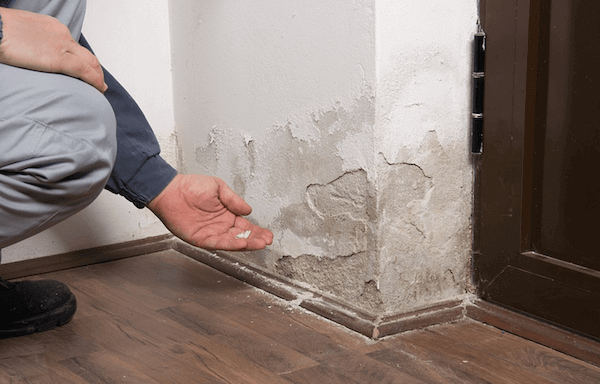Do's & Don'ts of Water Damages.
Do's & Don'ts of Water Damages.
Blog Article
Almost everyone is bound to have their own individual opinion in relation to Keeping Your Home Safe This Holiday Season.

Water provides life, water invasion on components where it's not intended to be can result in damages. It can peel off away surface areas as well as deteriorate the structure if the water soaks into your structure. Mold and mildew and also mold likewise prosper in a moist atmosphere, which can be harmful for your health and wellness. Houses with water damage scent stuffy and old.
Water can originate from lots of sources such as hurricanes, floodings, burst pipes, leakages, as well as sewage system problems. In case you experience water damage, it would certainly be great to know some safety and security preventative measures. Here are a few standards on how to manage water damage.
Do Prioritize Residence Insurance Coverage Protection
Water damage from flooding dues to hefty winds is seasonal. You can also experience an unexpected flooding when a defective pipeline all of a sudden ruptures right into your home. It would certainly be best to have house insurance that covers both acts of God such as natural tragedies, and emergency situations like broken plumbing.
Don't Neglect to Turn Off Utilities
In case of a disaster, particularly if you stay in a flood-prone area, it would be suggested to turn off the primary electric circuit. This removes power to your entire house, stopping electric shocks when water comes in as it is a conductor. Don't fail to remember to transform off the major water line valve. When floodwaters are high, furniture will move and also create damage. Having the primary valve turned off stops more damages.
Do Keep Proactive and also Heed Climate Alerts
Listen to discharge cautions if you live near a river, creek, or lake . Doing so decreases potential building damage.
Do Not Ignore the Roofing System
You can avoid rain damages if there are no openings and also leaks in your roofing system. This will certainly protect against water from flowing down your walls as well as saturating your ceiling.
Do Pay Attention to Small Leaks
A ruptured pipeline does not take place over night. Usually, there are red flags that suggest you have deteriorated pipelines in your house. For instance, you may discover bubbling paint, peeling wallpaper, water streaks, water spots, or leaking noises behind the walls. Ultimately, this pipe will rupture. Ideally, you ought to not wait for things to escalate. Have your plumbing fixed prior to it causes massive damage.
Don't Panic in Case of a Burst Pipeline
When it comes to water damage, timing is crucial. Hence, if a pipe ruptureds in your home, promptly shut off your primary water shutoff to cut off the source. Call a reliable water damages restoration expert for aid.
Water gives life, water invasion on components where it's not supposed to be can result in damage. Houses with water damages smell old as well as stuffy.
Water damages from flooding dues to heavy winds is seasonal. You might see bubbling paint, peeling wallpaper, water touches, water discolorations, or dripping sounds behind the walls. When it comes to water damages, timing is crucial.
Some Do's & Don't When Dealing with a Water Damage
DO:
Make sure the water source has been eliminated. Contact a plumber if needed. Turn off circuit breakers supplying electricity to wet areas and unplug any electronics that are on wet carpet or surfaces Remove small furniture items Remove as much excess water as possible by mopping or blotting; Use WHITE towels to blot wet carpeting Wipe water from wooden furniture after removing anything on it Remove and prop up wet upholstery cushions for even drying (check for any bleeding) Pin up curtains or furniture skirts if needed Place aluminum foil, saucers or wood blocks between furniture legs and wet carpet Turn on air conditioning for maximum drying in winter and open windows in the summer Open any drawers and cabinets affected for complete drying but do not force them open Remove any valuable art objects or paintings to a safe, dry place Open any suitcases or luggage that may have been affected to dry, preferably in sunlight Hang any fur or leather goods to dry at room temperature Punch small holes in sagging ceilings to relieve trapped water (don't forget to place pans beneath!); however, if the ceiling is sagging extremely low, stay out of the room and we'll take care of it DO NOT:
Leave wet fabrics in place; dry them as soon as possible Leave books, magazines or any other colored items on wet carpets or floor Use your household vacuum to remove water Use TV's or other electronics/appliances while standing on wet carpets or floors; especially not on wet concrete floors Turn on ceiling fixtures if the ceiling is wet Turn your heat up, unless instructed otherwise

I am very interested in Safety Tips To Prevent Fire And Water Damage and I really hope you liked our entry. Do you know another person who is inquisitive about the niche? Why not promote it. I cherish reading our article about 5 Home Safety Tips To Reduce The Risk Of Fire And Water Damage.
Report this page